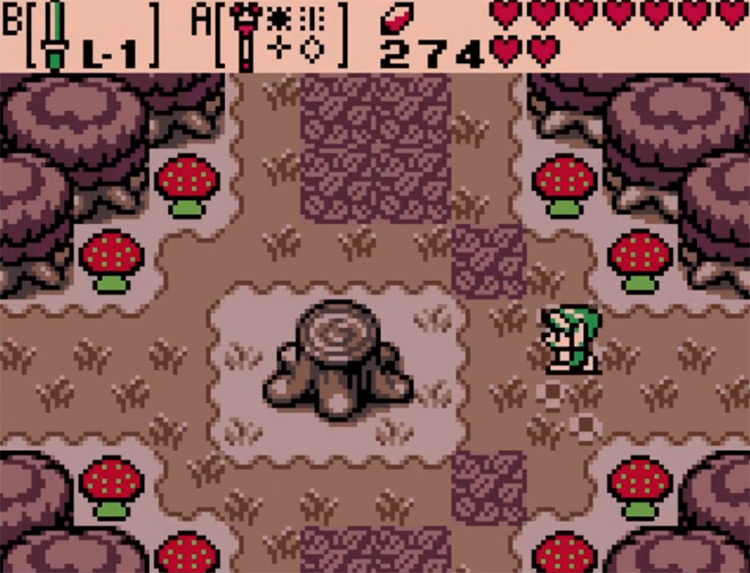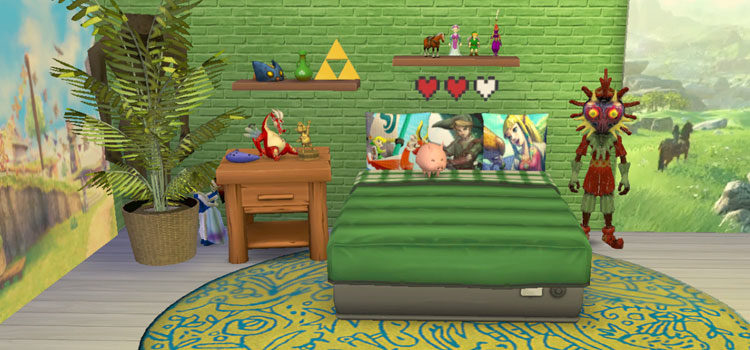The Best Zelda Overworlds From All TLoZ Games
This post may contain affiliate links. If you buy something we may get a small commission at no extra cost to you. (Learn more).
Freedom of exploration and world design are significant drivers of The Legend of Zelda’s success.
The landscapes, secrets, and overall feel of exploring a vast kingdom keeps us coming back to Hyrule, convinced that we’ll find something new and exciting every time.
You’ll notice its influence in almost every fantasy adventure game since the original The Legend of Zelda was released in 1987.
Comparing it to other games seems almost unfair, so we can ask ourselves:
Which Zelda did it better?
Let’s look at the best overworlds across 35+ years of The Legend of Zelda.
12. The Legend of Zelda (1987)

We’ll kick things off with an all-time classic – the original game in the series.
The Legend of Zelda set itself apart by giving the player more freedom than other action-adventure titles on the NES.
You could go to almost any cavern or dungeon in the game from your starting point. It’s even possible to reach Ganon without a sword if you’re exceptionally good at dodging enemies.
Our first look at Hyrule is simple but packed with secrets to discover. The lack of hand-holding made every discovery feel rewarding and worthwhile.
11. The Legend of Zelda: Spirit Tracks (2009)

What makes an overworld great?
Is it the size? The environment? The amount of treasure?
A good overworld evokes a desire to explore and eventually conquer the land. That’s what makes Spirit Tracks’s “overworld” so fantastic.
I put the word “overworld” in quotation marks because it’s hard to call Spirit Tracks’ railroad hub a real overworld.
Still, slowly connecting the land of New Hyrule through the Spirit Tracks gives players a sense of adventure as they gradually expand the network into the frontier.
10. The Legend of Zelda: Skyward Sword (2011)

Here’s an unpopular opinion.
Skyward Sword is routinely criticized online for having no overworld, but I think that’s a narrow-sighted way of seeing the game’s exploration.
As I mentioned, a good overworld depends on the feeling it evokes, not measurable stats like the number of secrets or how many steps it takes to go from one end to the other.
Flying over the wildlands on my Crimson Loftwing before diving down onto the surface was exciting, and the outer edges of each dungeon more than made up for the lack of a “Hyrule Field” of sorts.
9. The Legend of Zelda: Ocarina of Time (1998)

Ocarina of Time can’t be considered a true “open world” in the modern sense of the word, but the sense of scale in its 3D overworld made the feeling indistinguishable.
I felt the same way the first time I stepped out of the Kokiri Forest and into Hyrule Field as I did the first time I escaped Helgen and marveled at the snowy mountains of Skyrim.
Moreover, this game features one of the most iconic overworld themes in existence.
Just thinking about it gives me goosebumps.
8. The Legend of Zelda: Majora’s Mask (2000)

Ocarina of Time’s overworld might have had scale and grandeur – but it was severely lacking in content.
For the sequel, Majora’s Mask, Nintendo went in the opposite direction.
Exploring Termina is less about traversing large swaths of land and more about digging deep into each location.
Termina Field serves mainly as a hub from where to access the other areas, each larger and more complex than they had been in Ocarina of Time.
Still, the time spent in Termina Field is fun and exciting – and the music accompanying its exploration is a work of art.
It blends the BGM for Hyrule Field in Ocarina of Time with the main Zelda theme from the NES original and injects an intense sense of urgency to complement the three-day time limit.
7. The Legend of Zelda: The Minish Cap (2005)

There’s something about 2D overhead maps that just hits different.
Exploring the lush and colorful environments of The Minish Cap is one of my favorite gaming experiences on the GBA. The sheer charm of this vast land is hard to understate.
What stands out in most 2D Zelda overworlds is how well-connected they are. It makes it feel like the Castor Wilds, Eastern Hills, Lake Hylia, and the Hyrule Castle belong in the same kingdom.
6. The Legend of Zelda: Oracle of Seasons (2001)

Another hit from the 2D realm with a superb overworld is Oracle of Seasons on the GBA.
Following the success of A Link to the Past and Link’s Awakening, Oracle of Seasons went with the same overworld style, highlighting freedom of exploration and content density.
Holodrum is full of barely inhabited wildlands composed of lakes, mountains, pastures, and a gorgeous open coast – all hiding numerous pieces of heart and secret seashells to discover.
That said, Oracle of Seasons shines for something else. You guessed it: the seasons.
The Rod of Seasons allows Link to change the natural environment around him to solve puzzles and open new paths. This lets you take in the natural beauty of every screen in four styles, including a white winter and warm-colored autumn.
5. The Legend of Zelda: Link’s Awakening (2019)

The overworld map for 1993’s Game Boy hit Link’s Awakening follows the same design philosophy as Oracle of Seasons, minus the seasons.
So, why is it higher in the list rather than lower?
That’s because of the 2019 remake, which turns an already appealing map into a festival of color and texture. The developers designed Koholint to look like a diorama, and the results speak for themselves.
It’s also easier to navigate the island thanks to a well-connected network of warp points.
Moreover, Link’s Awakening is famous for featuring some of the best exploration BGM in the series. The iconic Tal Tal Heights comes to mind.
4. The Legend of Zelda: Twilight Princess (2006)

Twilight Princess’ massive overworld is remarkably controversial among fans of the franchise.
Some people think it’s the most epic overworld in the series, with an incredible sense of scale and excellent background music that really gets you in the mood to save the world.
Others criticize it for its lack of meaningful secrets to discover. According to this camp, it feels barren, unlike the content-packed maps of the 2D era.
Still, the sheer wonder of running through the plains under a full moon as wolf Link is enough to earn it a place on the ranking.
The stylized naturalistic art style perfectly matches the game’s dark and wistful tone.
3. The Legend of Zelda: A Link to the Past (1992)

A Link to the Past is one of the most influential releases in the Zelda franchise.
This SNES masterpiece had everything that makes Zelda so special – and the overworld is a master class on map design.
It’s so densely populated with enemies and secrets to discover that it’s hard to wrap your head around it. Not only that, but its visual design is a thing of beauty. I could print an overhead view of this map and hang it on my wall!
Don’t even get me started on how exciting it was to visit the dark reflection of Hyrule. It’s two overworlds for the price of one!
The 3DS remake, A Link Between Worlds, shares the same map and improves upon it with its “turn into graffiti” mechanics, but I wanted to give credit to a game that revolutionized the franchise.
2. The Legend of Zelda: The Wind Waker (2003)

The Wind Waker was a revolutionary entry in the Zelda series that let on-foot exploration of the overworld behind in favor of sailing the Great Sea on the King of Red Lions.
It was a little time-consuming, but nothing compares to the immersion and sense of scale you get from sailing this vast open ocean.
The way the larger islands slowly come into view as you approach them is the perfect build-up for the adventure ahead. Some of these islands felt infinitely mysterious until you got the right tool to unlock their secrets, which adds a lot to the experience.
The sailing theme in Wind Waker is also some next-level stuff.
1. The Legend of Zelda: Breath of the Wild (2017)

Render to Caesar the things that are Caesar’s.
The entirety of Breath of the Wild revolves around its massive and intricately detailed open world. It’s a journey of discovery through a world that has left you behind, and it’s beautiful.
No matter how many times I dive into Akkala, Eldin, Faron, Lanayru, or any other area in the game, I continue to discover new highlights. The amount of work put into filling Breath of the Wild with details and secrets is worthy of admiration.
Forget Calamity Ganon, the collapsed kingdom of Hyrule, and my duty as the hero’s reincarnation. I want to leave everything behind and travel the land on the Master Cycle Zero.






